Modern Warrior Series: War Shirt #4 - National Sacrifice
- Bently Spang, Northern Cheyenne, American, b. 1960
- Born: Montana
- Work Locations: Billings, MT
Bently Spang is a Northern Cheyenne sculptor and installation and performance artist. Born in 1960, he did not begin his career as an artist until his late twenties. In 1996 he earned his MFA from the University of Wisconsin-Madison and has since received several prestigious awards and grants for his artwork. He has taught as a professor at the School of the Museum of Fine Arts in Boston and currently lives in Montana.
Spang uses materials available to him just as his relatives in the past used what was available to them. Here he has stitched photographs of flowers and rocks into the form of a traditional Cheyenne warrior shirt, which he further embellishes with bits of plastic packaging, ornaments, and straw fringe (see “Details”).
Bently Spang’s War Shirt #4 is a direct response to the U.S. government’s designation of Spang’s homeland, the Northern Cheyenne Indian Reservation, as a “National Sacrifice Area” suited only for the extraction of coal and other minerals. It is the fourth such shirt he has made.
“I made this shirt to honor the ‘National Sacrifice’ my relatives in the past made to secure my people, the Cheyenne or Tsistsistas and Suhtaio as we call ourselves, our beautiful homeland. It also represents my commitment to protect this homeland, the Northern Cheyenne Reservation in Montana and our ranch there next to the Tongue River, wherein the flowers and rocks depicted on this shirt reside.”
Details
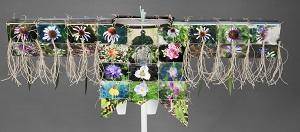
War Shirt
Spang uses the form and structure of a war shirt, a traditional garment worn by Cheyenne men that advertised a warrior’s personal exploits. Historically, warriors decorated their shirts with human hair fringe collected from tribal members to remind them of the power they derive from their community. In his shirt, Spang uses leaves and straw. See an example of a traditional war shirt here.
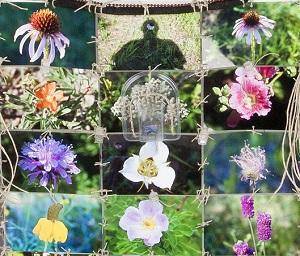
Flowers and Rocks
Spang made the shirt with photos of flowers and rocks taken on the Northern Cheyenne reservation in Montana. He uses these images as a reminder of the power of place and the reason his relatives fought to protect their homeland.
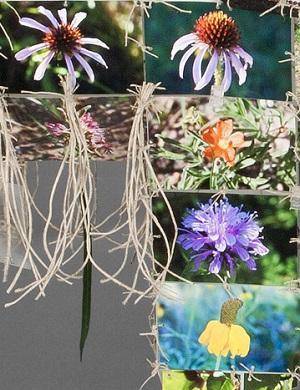
Specific Flowers
The flowers shown on the front of War Shirt #4 include echinacea (coneflower), yarrow, hollyhock, and wild rose. According to Spang, “the power of the flowers does not only lie in their aesthetic qualities. The Northern Cheyenne have used the flowers for medicinal, spiritual and culinary purposes.”
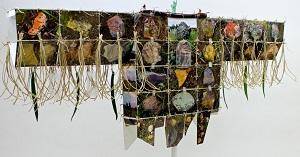
Rocks
Photographs of rocks make up the back side of the war shirt. “The rocks hold within them the history of this place, revealed only to a privileged few,” Spang says. For Spang, these privileged few are the keepers and protectors of his people’s history.

Plastic Packaging
On the front and back of the shirt and under the arms, Spang has attached plastic packaging for the camera batteries used to shoot the photographs, SD flash card adapters, and Ethernet connectors. The Ethernet cables, he says, are a way of “harnessing another power, namely that of the digital superhighway…Just as the old war shirts gathered or harnessed power to protect the wearer as they protected their people and their homeland, so today these elements come together to protect myself, the wearer and my people/homeland in this time period.”
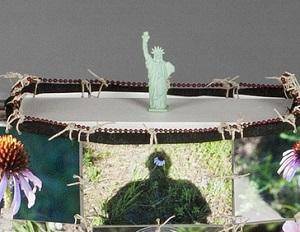
Statue of Liberty
Spang has attached a small Statue of Liberty at the top of the war shirt to symbolize the word “national” in the phrase “National Sacrifice,” which is not only part of the artwork’s title but a reference to the U.S. government’s designation of the Northern Cheyenne Indian Reservation as a National Sacrifice Area.

Plastic Palm Trees
The two tiny white plastic palm trees affixed to the bottom of the pedestal signify “the trivialization and industrialization of the natural world by the national powers that made the National Sacrifice Area designation,” the artist says.
More Resources
Videos
Bently Spang Interview - "Echoes of Change" Conference, Bozeman MT
BENTLY SPANG Interview - "Echoes of Change" Conference, Bozeman MT from reuben tomas roqueni on Vimeo.
Hear Bentley Spang talk about his inspiration and views on traditional versus contemporary American Indian art in this interview from the “Echoes of Change” Conference.
Books
Horse Capture, Joseph D. Beauty, Honor, Tradition: The Legacy of Plains Indian Shirts. National Museum of the American Indian: Washington D.C., 2001.
This exhibition catalogue by the Smithsonian Institution’s National Museum of the American Indian and the Minneapolis Institute of Arts presents a new perspective on the creation, history and meaning of the Plains Indian’s War Shirt.
Funding for object education resources provided by a grant from the Morgridge Family Foundation. Additional funding provided by the William Randolph Hearst Endowment for Education Programs, and Xcel Energy Foundation. We thank our colleagues at the University of Denver Morgridge College of Education.
The images on this page are intended for classroom use only and may not be reproduced for other reasons without the permission of the Denver Art Museum. This object may not currently be on display at the museum.
